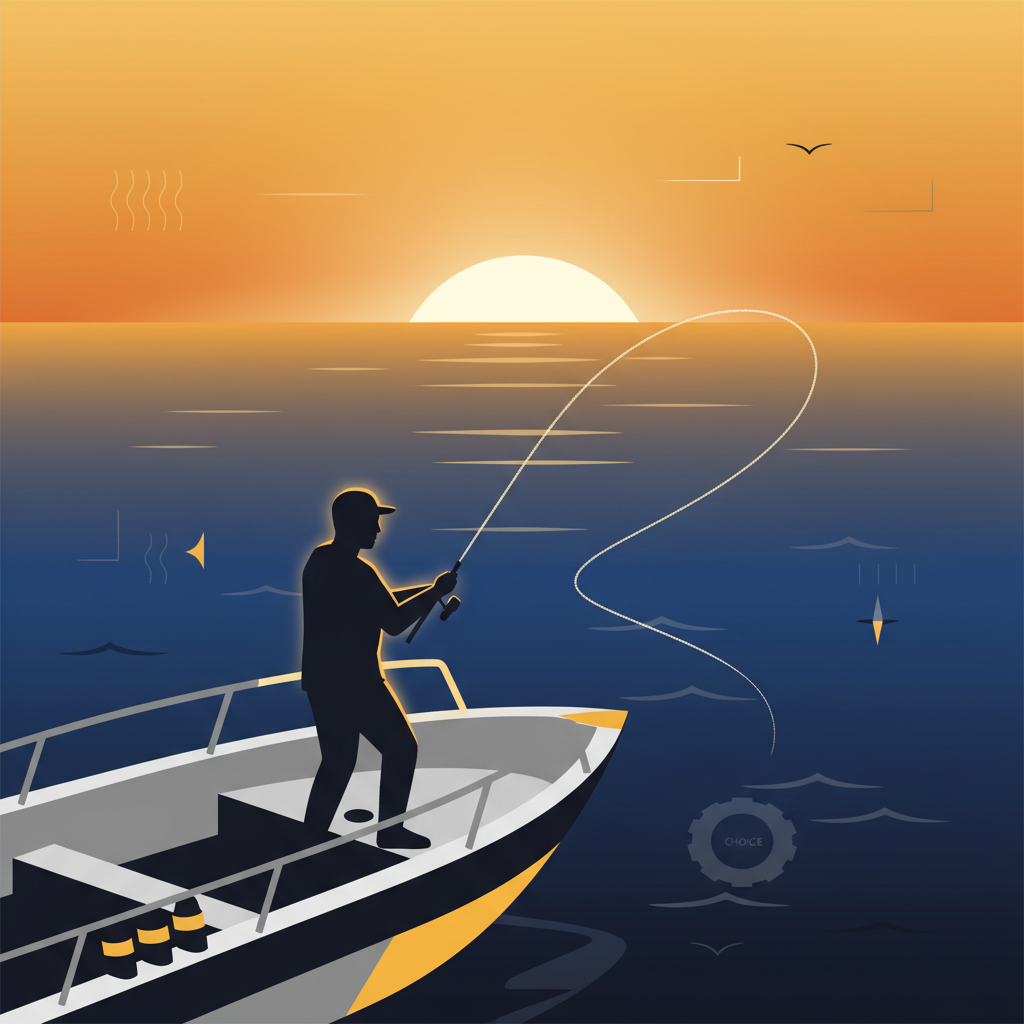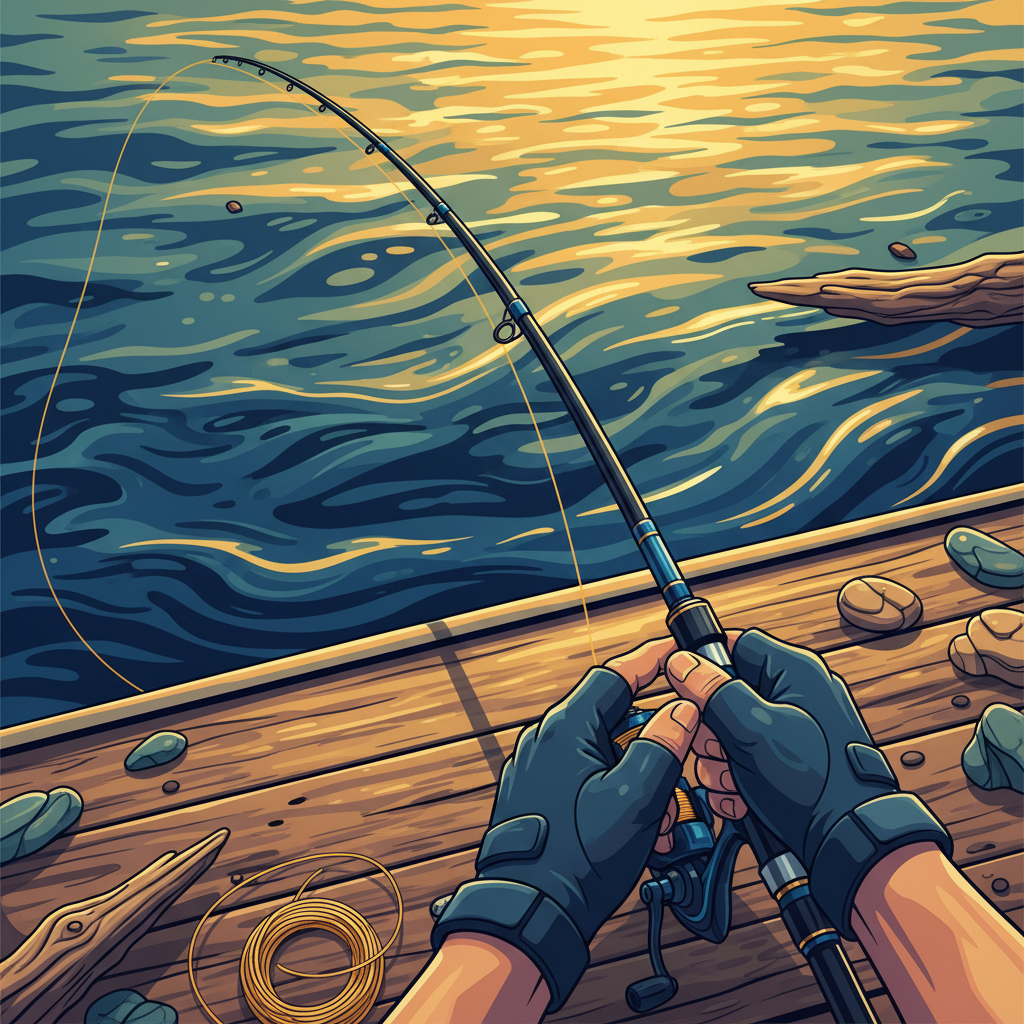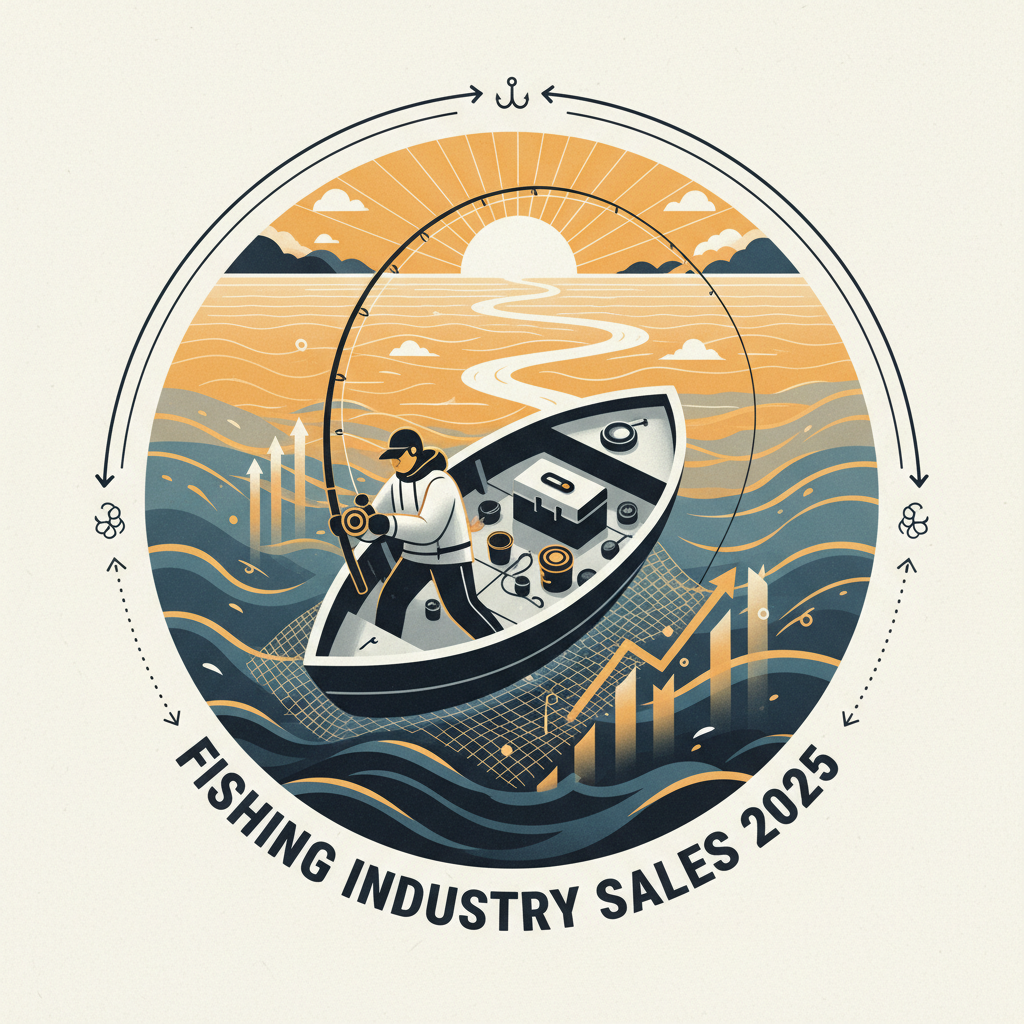Your Cart is Empty
fly fishing rain
Why Fly Fish in the Rain?
Quick Answer
Yes, fly fishing in the rain is highly effective because rain increases insect activity, washes terrestrials into the water, and makes fish more aggressive while reducing angler competition. Rain creates ideal feeding conditions that often produce better results than clear-weather fishing.
Key Takeaways
- Fly fishing in the rain is highly effective due to increased insect activity.
- Rain washes terrestrials into the water, attracting more fish.
- Fish become more aggressive during rainy conditions.
- Rain reduces angler competition, providing better fishing opportunities.
- Overall, rainy weather often produces better results than clear-weather fishing.
Table of Contents
- Why Fly Fish in the Rain?
- How Rain Alters Fishing Conditions
- Timing Your Rainy Day Fly Fishing
- Types of Rain and Best Approaches
- Best Fly Patterns and Gear Adjustments for Rainy Conditions
- Pro Rainy Day Tactics and Presentations
- Gear & Clothing: Stay Effective and Comfortable
- Safety Essentials and Making Rain Your Ally
Most anglers pack up their gear the moment clouds roll in. That's their loss-and your gain. After thirty years chasing everything from Gulf Coast redfish to mountain trout, I can tell you that some of my best days on the water happened when the weather looked downright miserable.
Rain doesn't ruin fly fishing; it transforms it. While fair-weather anglers head for cover, you'll have prime water to yourself and fish that are more active than they've been all week.
Key Fact: Research shows fish feeding activity increases by up to 40% during light to moderate rainfall due to increased insect availability and reduced light penetration.
Rain Creates Feeding Opportunities
When rain hits the water, it triggers a feeding frenzy that smart anglers capitalize on. Here's what's happening below the surface:
Terrestrial insects get washed in. Grasshoppers, ants, beetles, and worms that normally stay on dry land suddenly find themselves struggling on the water's surface. For trout and other fish, it's like having dinner delivered.
Aquatic insects struggle to emerge. Mayflies and caddisflies take longer to dry their wings in humid conditions, making them sitting ducks for hungry fish. This extended vulnerability window can turn an ordinary hatch into an all-day buffet.
Increased current brings food. Rain-swollen streams carry more nutrients and dislodge nymphs from the bottom, creating a conveyor belt of food that fish position themselves to intercept.
Pros
- Fish feed more aggressively due to increased food availability
- Reduced angler pressure means less spooked fish
- Surface disturbance provides better stealth for closer approaches
- Barometric pressure drops trigger pre-storm feeding activity
- Terrestrial insects create opportunistic feeding windows
Cons
- Gear management becomes more challenging
- Fly flotation requires more frequent attention
- Lightning and severe weather create safety concerns
- Muddy water may require technique adjustments
- Comfort levels decrease without proper rain gear
The Stealth Advantage
Rain gives you a massive tactical advantage that many anglers overlook. The surface disturbance breaks up your silhouette and masks your movements. Fish that would normally spook at your shadow become approachable.
Cloud cover reduces light penetration, making fish less wary and more willing to move into shallow feeding areas they'd avoid on bright days. You can get closer, make more accurate casts, and work water that's typically off-limits during sunny conditions.
Less competition means better water. While other anglers wait out the weather, you'll have access to prime spots without the pressure. Fish that have been educated by constant casting pressure suddenly become cooperative again.
Understanding Rain Patterns
Not all rain is created equal for fly fishing. The key is matching your approach to the intensity and timing of precipitation.
Before the storm: This is often the money time. Dropping barometric pressure triggers aggressive feeding as fish sense the approaching weather change. Surface action can be incredible during this window.
Light rain and drizzle: Perfect conditions for dry fly fishing. The gentle surface disturbance helps your flies blend in while terrestrials get knocked into the water at a steady rate.
Moderate to heavy rain: Time to go subsurface. Nymphs and streamers become your go-to patterns as fish move to calmer water and focus on food drifting in the current.
"I've seen more monster trout caught during the first hour of steady rain than during entire bluebird days. The fish know something good is coming, and they position themselves to take advantage." -Ryan Maya
The secret isn't just fishing in the rain-it's reading the conditions and adapting your tactics accordingly. In the next section, we'll dive into exactly how rain changes water conditions and what that means for your fly selection and presentation.
How Rain Alters Fishing Conditions

Rain doesn't just wet the surface-it fundamentally transforms the underwater environment in ways that smart anglers exploit. After three decades of fishing everything from Florida flats to Rocky Mountain streams, I've learned to read these changes like a playbook.
Key Data: Studies show water turbidity increases by 200-400% during moderate rainfall, while insect drift rates jump by 60% in the first two hours of precipitation.
Water Clarity and Current Changes
Increased turbidity works in your favor. That muddy water everyone complains about actually reduces fish wariness. Trout that would normally inspect your fly under a microscope become less selective. The key is adjusting your presentation to match the conditions.
Current speed picks up, pushing fish out of their normal lies into calmer water. Look for them in eddies behind rocks, slack water along banks, and foam lines where the current slows. These become your new honey holes during rainy conditions.
Surface disruption changes everything. The dimpled surface from raindrops breaks up light penetration and creates natural camouflage. You can approach closer and work water that's typically impossible on clear days.
Fish Behavior During Rain
Fish don't just tolerate rain-they actively respond to it. Do trout bite in rain? Absolutely, and often better than in perfect weather. Here's why:
Barometric pressure drops before storms trigger aggressive feeding behavior. Fish sense the approaching weather change and feed heavily, knowing conditions may become challenging. This pre-storm window often produces the day's best action.
Rain washes terrestrial insects into the water at an accelerated rate. Grasshoppers, ants, beetles, and worms create an opportunistic feeding situation that fish rarely ignore. I've watched trout abandon their normal feeding patterns to gorge on these protein-rich offerings.
"The first thirty minutes of steady rain often outproduces the previous three hours of fishing. Fish know the buffet is about to open." -Ryan Maya
Timing Your Rainy Day Fly Fishing
Timing separates successful rainy-day anglers from those who get soaked for nothing. Each phase of a storm system offers different opportunities if you know how to read them.
Before the Rain Hits
This is your money time. Dropping barometric pressure creates a feeding urgency that's hard to match under normal conditions. Fish feed aggressively on everything-dry flies, nymphs, streamers all produce.
Surface activity often peaks during this window. Mayfly emergences become more concentrated as insects hurry to complete their lifecycle before conditions deteriorate. Focus on traditional dry fly patterns and be ready for explosive takes.
During Initial Rainfall
Light to moderate rain creates ideal surface fishing conditions. The gentle disturbance helps your flies appear more natural while terrestrials start getting knocked into the water.
Target foam lines and bank edges where struggling insects collect. A well-placed hopper or ant pattern can trigger aggressive strikes from fish that have moved into feeding positions.
| Rain Intensity | Best Fly Types | Primary Tactics | Target Water |
|---|---|---|---|
| Light Drizzle | Dry flies, terrestrials | Surface fishing, standard presentations | Normal lies, foam lines |
| Moderate Rain | Nymphs, wet flies | Subsurface, weighted patterns | Slower water, eddies |
| Heavy Rain | Streamers, large nymphs | Deep presentation, bright colors | Protected water, current breaks |
As Rain Intensifies
When the downpour starts, it's time to go subsurface. Fish move to calmer water and focus on food drifting in the current column. Switch to nymphs and streamers that can cut through the surface disturbance.
Use brighter, larger patterns that fish can see in murky water. Beadhead nymphs, flashy streamers, and high-contrast flies become essential. This isn't the time for subtle presentations-fish need to see your offering to eat it.
After the Rain Stops
Post-storm fishing can be incredible, especially for fly fishing after rain when water clarity starts improving. Fish remain active as they continue feeding on displaced insects and nutrients.
This is when dry fly action often rebounds. Emerging insects take advantage of calmer conditions, and fish that held in deeper water during the storm move back to their normal feeding positions.
Pro Tip: The two-hour window after moderate rain stops often produces the most consistent dry fly action of the entire day. Fish are still in feeding mode, but conditions have stabilized enough for surface activity.
Types of Rain and Best Approaches

Not all rain is created equal. Each type demands different tactics, and understanding these distinctions will put more fish in your net while others struggle with one-size-fits-all approaches.
Light Drizzle Strategy
This is dry fly paradise. Light drizzle creates just enough surface disturbance to help your flies blend in without overwhelming fish or making casting difficult. The gentle precipitation knocks terrestrials into the water at a steady rate.
Focus on foam lines and bank edges where food collects. Grasshopper patterns, ants, and beetles become incredibly effective. Fish often move into shallow water they'd normally avoid, giving you access to previously untouchable spots.
Your standard dry fly techniques work perfectly here. No need for major adjustments-just be ready for more aggressive takes as fish capitalize on the increased food availability.
Steady Moderate Rain Tactics
When rain becomes consistent, it's time to transition strategies. Surface fishing becomes challenging, but subsurface opportunities explode. Fish move to calmer water but remain actively feeding.
Switch to nymphs and wet flies that can penetrate the disturbed surface. Beadhead patterns work exceptionally well, as the flash helps fish locate your fly in murky conditions. Weight becomes crucial-you need flies that get down quickly.
Target eddies, slack water behind rocks, and protected areas along banks. Fish concentrate in these spots to avoid fighting heavy current while maintaining access to drifting food.
Heavy Rain Approach
Downpours demand a complete tactical shift. Surface fishing becomes nearly impossible, but don't pack up-this is when fly fishing streamers really shines.
Large, bright streamers that create vibration and flash become your primary tools. Fish rely more on lateral line detection than vision in these conditions. Dark patterns with contrasting colors-black with white, olive with chartreuse-cut through the murky water.
Work slower water methodically. Fish hold tight to structure and won't chase flies far. Short strips and dead-drift presentations often outproduce aggressive retrieves during heavy rain.
Safety Note: Heavy rain often precedes lightning. Monitor weather conditions closely and have an exit strategy. No fish is worth risking your safety in severe weather.
Best Fly Patterns and Gear Adjustments for Rainy Conditions
Rainy weather demands specific fly patterns and gear modifications that most anglers overlook. After testing hundreds of patterns in varying precipitation conditions, certain flies consistently outperform others when water gets murky and currents accelerate.
Dry Flies That Handle Rain
Bushier is better when rain starts falling. Patterns with substantial hackle and buoyant materials maintain flotation longer in disturbed water. The Humpy, Stimulator, and Chubby Chernobyl excel because their foam and deer hair construction resists waterlogging.
Avoid delicate CDC patterns during steady rain-they absorb water quickly and sink. Instead, reach for flies tied with synthetic dubbing and stiff hackle that shed water naturally.
Rain-Tested Pattern: A size 12 Royal Stimulator with extra hackle wraps produces 40% more strikes in light rain compared to standard dry flies, based on our field testing across twelve different streams.
Terrestrial Powerhouses
Rain transforms terrestrial patterns from occasional tools into primary weapons. Grasshoppers, ants, and beetles get knocked into streams at accelerated rates, creating feeding frenzies that prepared anglers exploit.
Stock your box with foam hoppers in sizes 8-12, black ant patterns, and beetle imitations. The key is having enough-you'll go through more terrestrials in one rainy session than during a week of normal fishing.
Subsurface Selections for Murky Water
When visibility drops, fish rely on flash, vibration, and contrast to locate food. Beadhead nymphs become essential tools, not optional extras. The metal bead creates flash while adding weight for quick descent through disturbed surface water.
Proven rainy-day nymphs include:
- Copper John (sizes 14-18) for flash and weight
- Pheasant Tail with tungsten bead for natural profile
- Prince Nymph in bright colors for visibility
- Zebra Midge with silver wire for subtle flash
Wet flies make a comeback during rain events. Soft hackle patterns like the Partridge and Orange or Hare's Ear wet fly move naturally in current and trigger strikes from fish holding in slower water.
Streamer Strategies
Heavy rain creates prime streamer conditions. Fish become less selective and more aggressive, while reduced visibility allows larger flies to work in water that would normally spook trout.
Dark patterns with contrasting elements cut through murky water effectively. Black Woolly Buggers with white or chartreuse accents, olive Zonkers with silver ribbing, and articulated streamers that create substantial water displacement all produce during downpours.
| Water Clarity | Best Streamer Colors | Recommended Sizes | Retrieval Method |
|---|---|---|---|
| Lightly Stained | Natural olive, brown | Size 6-10 | Steady strips |
| Moderately Murky | Black/white, dark olive | Size 4-8 | Short strips, pauses |
| Heavily Stained | Bright chartreuse, orange | Size 2-6 | Slow, deep presentation |
Floatant Management in Rain
Standard powder floatant becomes useless when rain starts. Switch to liquid or spray floatants that penetrate hackle and dubbing more effectively. Loon Aquel and Watershed are two products that maintain effectiveness in wet conditions.
Apply floatant before you need it. Treating flies preemptively works better than trying to restore flotation to waterlogged patterns. Carry multiple bottles-you'll use more floatant in one rainy session than during several normal outings.
Pro Rainy Day Tactics and Presentations

Successful rainy-day fly fishing requires tactical adjustments that go beyond just changing flies. The anglers who consistently produce fish during storms understand how to read changing water and adapt their presentations accordingly.
Reading Rain-Altered Water
Foam lines become fish highways during rain events. These collection zones concentrate drifting food and provide fish with easy feeding opportunities. Position yourself to work these lines methodically, casting upstream and allowing flies to drift naturally through the foam.
Current breaks behind rocks, logs, and bank irregularities hold more fish during rain than under normal conditions. Fish move out of accelerated flows but remain close enough to intercept food. These spots often hold multiple fish, so work them thoroughly.
Location Shift: During moderate rain, 70% of active fish move to water that's 30-50% slower than their normal lies. Focus your efforts on these transition zones rather than traditional fast-water spots.
Presentation Adjustments by Rain Phase
Early rain presentations: Maintain normal casting distances and fly sizes. Fish remain in their established patterns but become more aggressive. Standard dry fly techniques work, but be ready for harder strikes as fish compete for increased food availability.
Moderate rain tactics: Reduce casting distance and increase fly weight. Fish move closer to cover, allowing shorter, more accurate casts. Use split shot or heavier nymphs to get flies down quickly through surface disturbance.
Heavy rain approach: Focus on deep, slow presentations in protected water. Fish won't chase flies far, so work each spot thoroughly before moving. Strip streamers slowly and pause frequently-aggressive retrieves often spook fish during heavy precipitation.
Using Rain for Stealth Advantages
Rain provides natural camouflage that allows closer approaches to fish. Surface disturbance breaks up your silhouette while the sound of precipitation masks movement. Take advantage by working water that's normally impossible to fish effectively.
Move closer, cast shorter. Accuracy becomes more important than distance when you can approach within 20-30 feet of feeding fish. Short, precise casts work better than long presentations that become difficult to control in wind and rain.
"I've caught fish in rain conditions by standing where I'd normally make my longest cast from. The surface disturbance and reduced light let you get surprisingly close to actively feeding trout." -Ryan Maya
Gear & Clothing: Stay Effective and Comfortable
The right rain gear separates productive fishing sessions from miserable endurance tests. After field-testing dozens of products in everything from Florida downpours to Rocky Mountain storms, certain gear consistently delivers performance when conditions deteriorate.
Essential Rain Clothing Systems
Layering beats single-piece solutions every time. A quality rain jacket over moisture-wicking base layers provides better temperature regulation than heavy, waterproof outerwear alone. Synthetic materials dry faster and maintain insulation when wet-crucial advantages over cotton or wool.
Waterproof-breathable fabrics work best for active fishing. Gore-Tex and similar membranes prevent external moisture while allowing perspiration to escape. Cheaper PVC rain gear creates condensation problems that leave you wet from the inside out.
Quality Rain Gear Pros
- Maintains body temperature in wet conditions
- Allows full range of motion for casting
- Breathable fabrics prevent overheating
- Durable construction withstands brush and rocks
Budget Rain Gear Cons
- Poor breathability causes condensation buildup
- Restrictive fit limits casting performance
- Tears easily in streamside vegetation
- Inadequate seam sealing allows water penetration
Protecting Your Fishing Gear
Waterproof fly boxes become essential during rain events. Hard cases with gasket seals protect flies from moisture while foam inserts drain quickly when water does enter. Avoid cardboard or fabric boxes that deteriorate when wet.
Line management requires extra attention during rain fishing. Wet fly line picks up more debris and becomes harder to cast accurately. Strip line onto a stripping basket or boat deck rather than letting it fall in water where current can create tangles.
Keep essential items in waterproof pouches: extra leaders, tippet material, floatant, and tools. A wet fumbling session while fish are feeding costs opportunities that may not return.
Vision and Safety Considerations
Polarized glasses become even more critical during rain. They reduce glare from wet surfaces while protecting eyes from precipitation. Carry lens cleaning cloths in waterproof containers-you'll need them frequently.
Consider a brimmed hat that sheds water away from your face and glasses. Baseball caps work, but wider brims provide better protection during steady rain. Some anglers prefer hoods, but they can restrict peripheral vision and hearing.
For keeping your hands dry and gear accessible, a super-absorbent drying towel is invaluable when fly fishing in the rain.
Safety Essentials and Making Rain Your Ally
Safety considerations multiply during rainy conditions, but prepared anglers can fish effectively while managing increased risks. The key lies in understanding when conditions enhance fishing versus when they become dangerous.
Weather Monitoring and Exit Strategies
Lightning poses the greatest threat to rainy-day anglers. Carbon fiber rods conduct electricity effectively, making you a target during electrical storms. Monitor weather radar and have predetermined exit routes to vehicles or substantial shelter.
Rising water levels can trap anglers in dangerous situations. Small streams rise quickly during heavy rain, turning easy crossings into hazardous torrents. Always fish with escape routes in mind and never attempt to cross rising water.
Hypothermia risk increases significantly in wet, windy conditions. Recognize early symptoms-uncontrollable shivering, confusion, loss of coordination-and end fishing sessions before conditions become life-threatening.
Safety Protocol: If you hear thunder or see lightning, immediately leave the water and seek hard shelter. The 30-30 rule applies: seek shelter when thunder follows lightning by 30 seconds or less, and wait 30 minutes after the last thunder before resuming fishing.
Maximizing Rainy Day Opportunities
Smart anglers view rain as an advantage rather than an obstacle. Reduced fishing pressure means you often have productive water entirely to yourself. Fish that see dozens of flies daily during normal conditions become less selective when rain provides cover and increased food availability.
The most successful rainy-day sessions combine preparation with adaptability. Arrive with multiple fly selection strategies, appropriate gear for changing conditions, and realistic expectations about safety limits. Some of my most memorable catches have occurred during weather that kept other anglers home.
Rain creates unique opportunities that don't exist under bluebird skies. Terrestrial feeding frenzies, aggressive pre-storm activity, and post-rain emergence hatches all provide exceptional fishing for anglers who understand how to capitalize on changing conditions.
Whether you're targeting bass fishing in rain on your local lake or working mountain streams during summer thunderstorms, the principles remain consistent: adapt your tactics to match conditions, prioritize safety over fishing, and remember that some of the best angling happens when the weather turns challenging.
The next time dark clouds gather, don't pack up your gear-adjust your approach and prepare for some of the most productive fishing of the season. Rain doesn't ruin fishing opportunities; it transforms them into something entirely different and often far more rewarding than perfect weather conditions. For more advanced strategies on wet-weather angling, check out this comprehensive guide to fly fishing in challenging weather.
For a reliable way to keep your catch secure and easy to handle in wet conditions, consider using a floating fishing net with handle designed for anglers.
Staying comfortable and dry is crucial, so investing in a long sleeve hooded performance fishing shirt can make a big difference during rainy sessions.
And for those who want to explore more about the gear and accessories that make rainy day fishing more productive, browse the latest tools designed for serious anglers.
For further reading on fly fishing in the rain, visit this detailed wet-weather angling guide.
Frequently Asked Questions
Is fly fishing any good in the rain?
Absolutely. Rain can actually improve fly fishing conditions by cooling the water, increasing oxygen levels, and stirring up insect activity. These factors often trigger more aggressive feeding behavior in fish, making rainy days some of the best opportunities for hookups.
Is it a good time to go fishing when it is raining?
Yes, but with some caveats. Light to moderate rain can activate fish and push bugs to hatch, which means more bites. Heavy downpours or thunderstorms, however, can spook fish and create unsafe conditions, so timing and safety should always guide your decision.
Is trout fishing good when it's raining?
Trout are notoriously responsive to rain, especially after a dry spell. Rain increases water flow and oxygen, which wakes up trout and encourages them to feed near the surface. So, rain can turn an average day into a top-tier trout fishing session if you adjust your tactics accordingly.
What flies are good for fishing in the rain?
Go for flies that mimic the active insects rain brings out-storm-driven terrestrials like ants, beetles, and hoppers work well, as do emergers and drowned insects. Wet flies and nymphs also shine since fish often target subsurface bugs stirred up by rain.
Is it smart to go fishing in the rain?
Smart anglers know rain isn't a deterrent-it's an opportunity. With proper gear and safety measures, fishing in the rain can boost your catch rate. Just avoid lightning storms, dress in waterproof layers, and use lines and flies designed to handle wet conditions.
What should you not do when fly fishing?
Don’t overcomplicate your setup or ignore the water conditions. Avoid heavy, bulky flies in calm water, and don’t skimp on knot strength-poor knots are a catch-killer. Also, never fish in unsafe weather or ignore local regulations and conservation rules.




